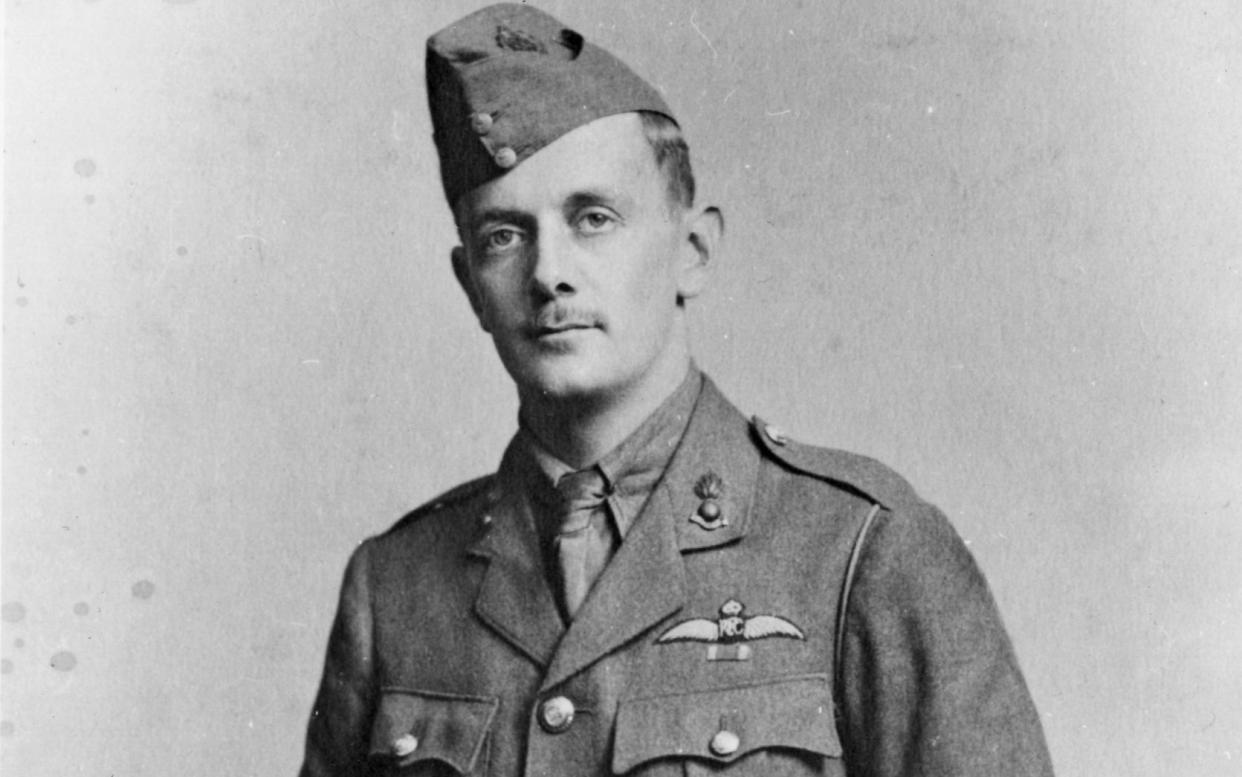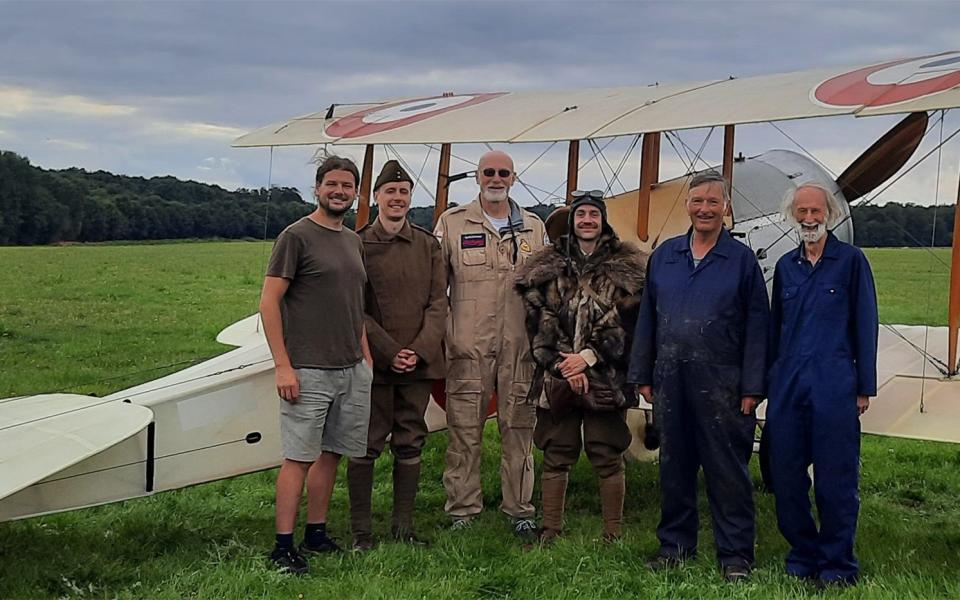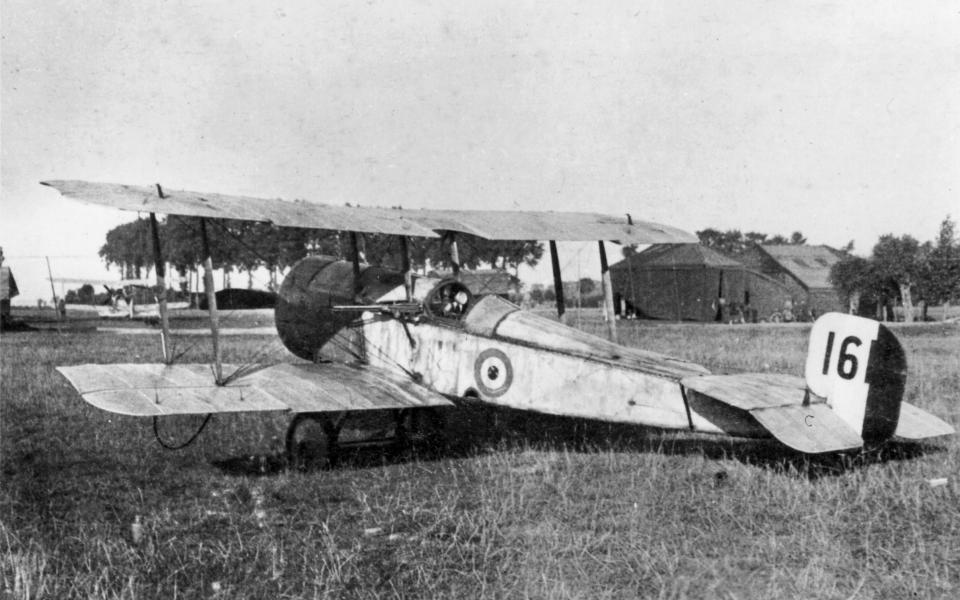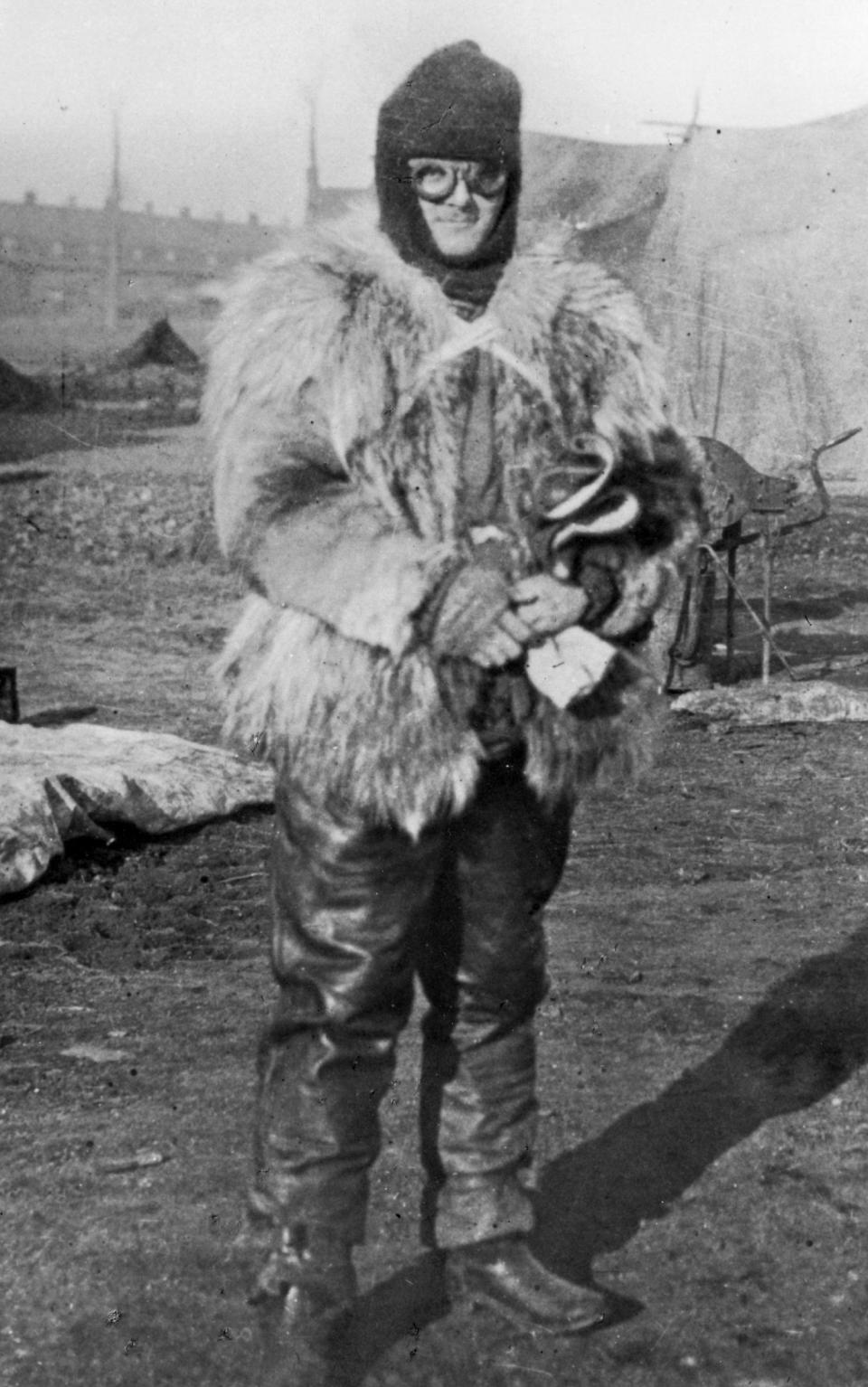The extraordinary untold story of Lanoe Hawker VC, Britain's first ace fighter pilot

- Oops!Something went wrong.Please try again later.
On 25 July 1915, Captain Lanoe Hawker, a young pilot of the Royal Flying Corps, took off on patrol over Passchendaele. He was flying a Bristol Scout, onto which he had attached his trusty Lewis machine gun. Soon he met with a German fighter. He emptied a whole drum of ammunition into the plane, which fell to earth. Then he downed another. Finally a third, an Albatross, which he engaged at 10,000 feet. It was the first time a British pilot had shot down three aircraft in a single sortie. Hawker was awarded the VC for his actions, which made him Britain’s first ace fighter pilot (two VCs had previously been given to bombers).
But despite their heroism, Britain’s First World War pilots tend to be less celebrated than their Second World War counterparts. The Battle of Britain and the Dambusters are mythologised more than their forebears.
Now, a director and actor, Daniel Arbon, is hoping to change that. Over the past four years he has been working on Hawker, a short film that dramatises the events which led to the pilot’s VC, using CGI and models as well as a full working Bristol Scout. The film is available to view via Vimeo. For the next week, a portion of all proceeds will be going to The Telegraph’s Christmas Appeal, which has the RAF Benevolent Fund as one of its chosen charities.

“It was not a story I had heard before, but I came across it on another project,” Arbon explains over Zoom. “It captivated me because I hadn’t realised that at the beginning of the First World War there weren’t fighter pilots. It was something that evolved through it. I thought ‘if it fascinates me and there’s no films that cover it…’. That was a lightbulb moment for me. It was a golden opportunity – why not try it?”
Shoestring budget
Having had the idea, Arbon set about trying to get a shoestring budget together, with the help of crowdfunding and grants from the Great War Aviation Society. In the end he made the 23-minute film on just £20,000, shooting most of it in his garden. He built many of the sets, including the cockpits, himself, and also appears in it as Lieutenant-Colonel Charles Burke. Hawker’s great-great-great-nephew, Lanoe Ertl, has a cameo as a plane-obsessed boy.
The family have said they are “absolutely delighted to see [Hawker’s] legacy honoured with this new film”. Given the constraints, the results are undoubtedly impressive: a charming dramatisation of a piece of forgotten history. Arbon hopes it will serve as proof of concept to convince production companies to put a serious budget behind a feature film about Hawker.
“As a lockdown project, it’s one of the most impressive I’ve heard of,” says Air Vice-Marshal Peter Dye, president of the Great War Aviation Society. “Having served in the Air Force for 35 years, I’m aware of the debt we owe to those early aviators, and yet the story is still not well known. Lanoe Walker relates so much to today. He was an outstanding engineer, tactician, commanded the first fighter squadron. But he was also an outstanding leader.
“The more we understand those early pioneers I think we understand some of their sacrifices. It perfectly matches what the RAF Benevolent Fund does in terms of reminding us how much we owe to those who serve.”
War career
Hawker was born in Hampshire in December 1890, into a military family. His father, Henry, was a lieutenant in the navy, while his mother Julia was the daughter of an infantryman with the Highlanders. The young Hawker was deemed to have too weak a constitution for the navy, but developed an interest in aviation and got his licence in 1913. He was attached to the RFC in August 1914, days before Britain entered the war. In early 1915 he was awarded the Distinguished Service Order for a grenade attack on a Zeppelin shed.
During the Second Battle of Ypres, in April and May, he was wounded by ground fire but carried on fighting, being carried to and from his aircraft between sorties. It was on his return to his squadron that he came up with the idea of mounting the machine gun in such a way that he could fire without interfering with the propeller. They weren’t his only innovation. He also came up with “fug” boots, the fleece-lined, thigh-high boots that would become standard issue, and a method for doubling the capacity of the Lewis’s ammunition drum.

The following year, led by Hawker’s simple mantra of “Attack everything!”, the RFC was able to counter German air superiority, which was known as the Fokker Scourge. During the battle of the Somme, in July, he personally led two missions.
“We’re in an increasingly confusing, rapidly changing world, and the First World War in terms of everything they faced in terms of technologies was not too dissimilar,” says Dye. “The fighter pilots were coping with a world that was changing rapidly. I don’t think anyone would deny that’s a challenge we face today.
Pioneering pilots
“We need leadership and people who demonstrate real values. I think those pilots achieved a great deal. They were pioneers. We talk about the Battle of Britain and how much is owed to those fighter pilots, but the first British pilot was Lanoe Hawker. His spirit motivated them in 1940.”
Hawker finished with seven credited victories, and left a legacy of innovation and derring-do.
“Yes, he was probably the best pilot of the day, but it’s him as a character and a person that I think make him a perfect lead,” says Arbon. “Giving credit to him is long overdue.” From a filmmaking point of view, the world of open cockpits, where pilots’ faces aren’t concealed by masks, makes it easier to show emotions during the battle. “It was important to me to get the close-up shots to see them in the cockpit. It’s a personal story, about a human being that we can empathise with.”

On November 23 1916, Hawker took off on what was to be his last sortie. He and two other pilots soon encountered a group of persistent enemy aircraft. Hawker was separated from the others in a fierce battle with another Albatross, a newer model, which could outpace, outmanoeuvre and – with two IMG 08 machine guns – outgun Hawker’s Airco DH.2.
After a lengthy dogfight, Hawker tried to make it back to Allied lines. But with a final burst before his guns jammed, the German pilot shot Hawker in the back of the head. Hawker’s plane crashed outside Bapaume, northern France. He was only 25.
Such was Hawker’s reputation that the enemy pilot collected his Lewis gun to hang as a trophy, and later wrote: “I discovered that I was not meeting a beginner. He had not the slightest intention of breaking off the fight.” The victorious pilot’s name? Manfred von Richthofen: the Red Baron.
Hawker is available on Vimeo, where it can be streamed for £1.99 or purchased for £2.99. For the next week, £1 from every sale will be going to the Telegraph Charity Appeal.
The RAF Benevolent Fund is one of four charities supported by this year’s Telegraph Christmas Charity Appeal. The others are Go Beyond, Marie Curie and Race Against Dementia. To make a donation, please visit telegraph.co.uk/2023appeal or call 0151 284 1927

